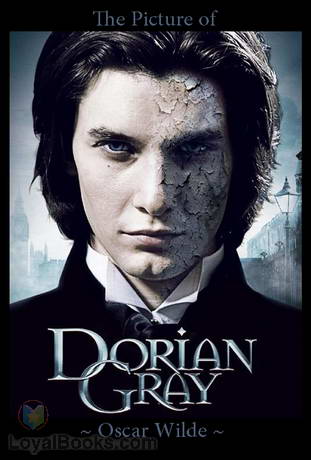
A novel that disturbs you 160 years after it first appeared in print, The Picture of Dorian Gray by Oscar Wilde, has so much relevance and resonance even today.
Dorian Gray is a strikingly handsome young man whose beauty attracts a debauched aristocrat Sir Henry Wotton. Dorian’s picture has been painted by a talented artist Basil Hallward and Sir Henry becomes desperate to meet Dorian, though Basil himself is against it. Sir Henry persuades Dorian to pose for a picture painted by Basil and during the painting sessions, Henry “educates” the young and impressionable Dorian about life. Sir Henry’s vicious nature, his obsession with youth and his cynical, materialistic outlook on everything begin to slowly affect Dorian. Dorian descends into a horrifying world, where he commits all manner of abhorrent deeds with all round him feeling the effects. Lives are destroyed, crimes are committed but Dorian’s self-indulgent and depraved life continues. The story takes a bizarre and terrifying twist from here onwards as the picture begins to develop a life of its own.
The Picture of Dorian Gray was first published as a serial in Lippincott’s Magazine in 1890 with much apprehension by the editors who feared that it was too corrupt and depraved for readers. Wilde’s own scandalous private life was already creating an uproar in society. Finally the novel was published in the magazine but with large-scale censorship without Wilde’s permission. As predicted, it caused widespread outrage and condemnation. However, Wilde remained unfazed and proceeded to publish it in book form with a wonderful preface which he called an Apologia, in which he talks about art, philosophy and creativity.
Controversy apart, the story is gripping in its Gothic atmosphere, making it a literary masterpiece, with Wilde’s brilliant touches of characterization, emotional sensitivity and understanding of human nature. Today’s modern emphasis on youthfulness, fighting age and obsession with external appearance finds echoes in this richly evocative novel. It has been extensively adapted for film, stage and television, with references to Dorian Gray appearing in a wide variety of works of art. Radio adaptations, plays and musicals have been continuously appearing right down to the present day.
The Picture of Dorian Gray has fascinated readers the world over, with its eternal themes of art, youth, beauty, morality and immortality. Dorian Gray remains the symbol of what all mankind seeks even today – the Fountain of Youth – even though it comes with a price tag.

Other Audiobook
Audiobook: Quatre filles du docteur Marsch
Roman célèbre écrit en français par P.-J. STAHL (Pierre-Jules HETZEL), d’après le texte si connu
Audiobook: Stories of Siegfried, Told to the Children
Dear Denis,—Here is a story that I found in an old German poem called the
Audiobook: Toxophilus
Toxophilus is a book about target archery using the English Longbow. The book is divided
Audiobook: Tacitus’ Histories
The Histories was written between 110 and 100 B.C. It covered the Year of Four
Audiobook: The Haunted Organist of Hurly Burly and Other Stories
This is a collection of 10 original ghost stories by Rosa Mulholland, published in 1880.
Audiobook: The Palace in the Garden
The Palace in the Garden is the engaging story of three orphans sent to live
Audiobook: Vulgari Eloquentia
De vulgari eloquentia (On Eloquence in the vernacular) is a short essay written by Dante
Audiobook: Emily Climbs
Emily Byrd Starr longs to attend Queen’s Academy to earn her teaching license, but her
Audiobook: Prince Silverwings and Other Fairy Tales
Edith Ogden Harrison’s first published work, Prince Silverwings, is a collection of seven fairy tales
Audiobook: Born to Serve
Despite a college education and a good family name, Barbara cannot get the teaching job
Audiobook: The Majesty of Calmness
Change your life by changing your thoughts. The Majesty of Calmness is your guide to
Audiobook: Bible (ASV) NT 06: Romans
The Epistle to the Romans is one of the letters of the New Testament canon